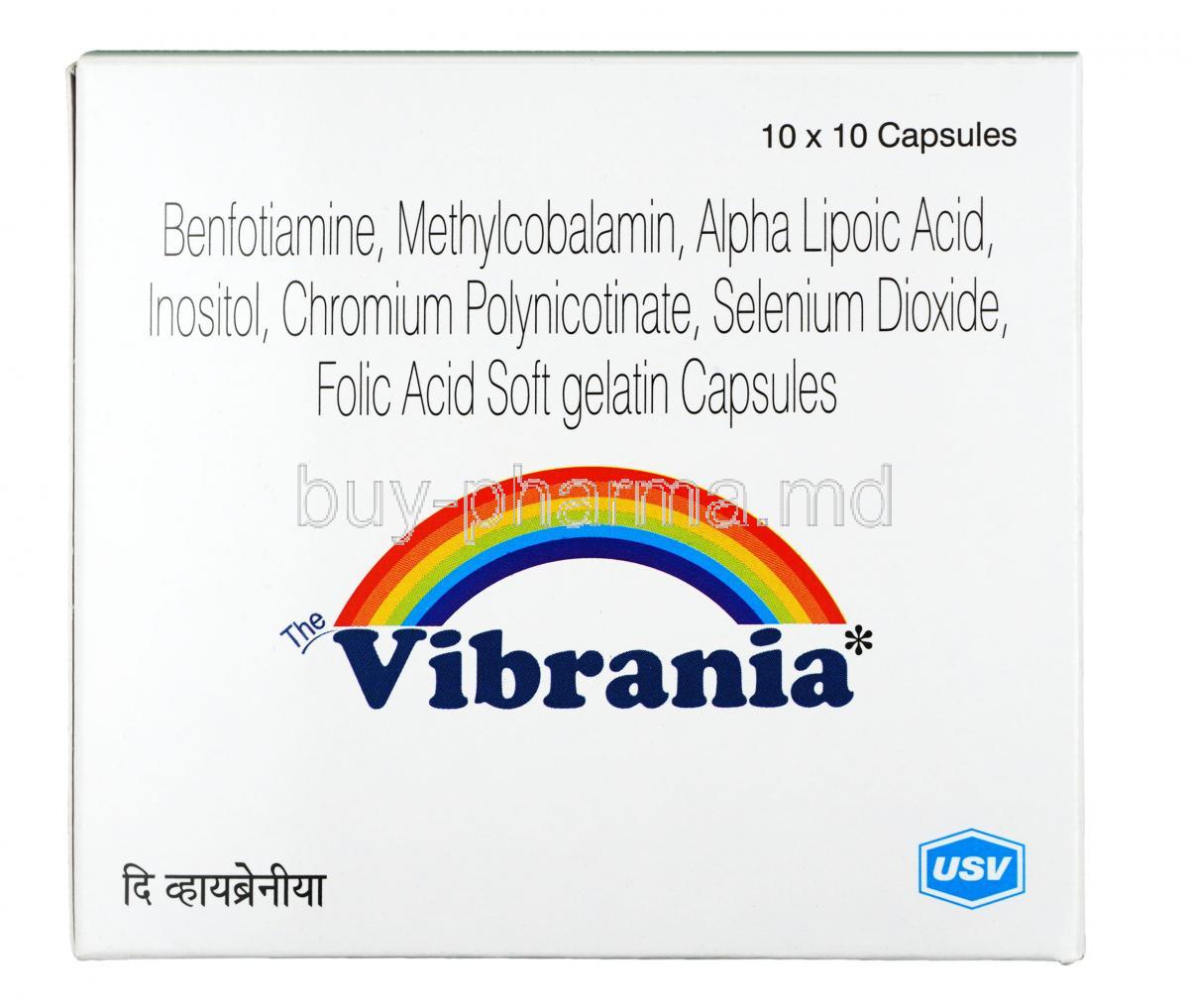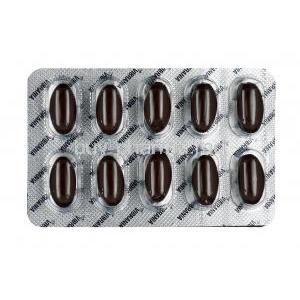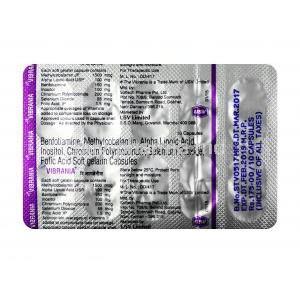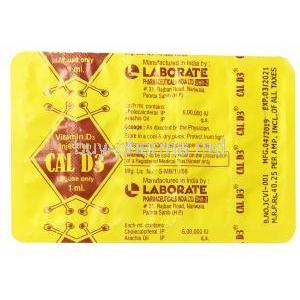Vibrania
- I. Introduction to Vibrania
- II. Composition of Vibrania
- III. How Vibrania Works
- IV. Uses of Vibrania
- V. Off-Label Uses of Vibrania
- VI. Dosage and Administration
- VII. Side Effects of Vibrania
- VIII. Important Precautions
- IX. Administration to Special Populations
- X. Overdosage and Emergency Management
- XI. Storage and Handling Precautions
I. Introduction to Vibrania
Vibrania is a therapeutic intervention that acts as a guiding light for patients navigating through their illnesses. This remarkable pharmaceutical product is designed to address a range of conditions, providing relief and promoting wellness. The origins of Vibrania can be traced back to a decade of research and clinical trials. It is the result of scientists' tireless pursuit of innovation aiming to fill the gap in treatment options. In today's landscape, Vibrania is prominent in revolutionizing treatment approaches and establishing new standards for clinical excellence.
II. Composition of Vibrania
The core of Vibrania comprises its therapeutic components, carefully chosen for their beneficial properties. Vibrania-P is a combination of two active ingredients: Methylcobalamin and Pregabalin 1. Methylcobalamin is a form of vitamin B12 that helps in the production of myelin, a substance that protects nerve fibers and rejuvenates damaged nerve cells. Pregabalin is an alpha 2 delta ligand that decreases pain by modulating calcium channel activity of the nerve cells 1.

III. How Vibrania Works
How Vibrania works: The way Vibrania works highlights the ingenuity of advancements by targeting specific pathways to improve symptoms and change the progression of diseases.
Effects on target systems: Vibrania has an impact on multiple systems and produces therapeutic benefits for a wide range of conditions. Pharmacokinetics and pharmacodynamics: The way Vibrania is absorbed and distributed in the body ensures effectiveness, while its interaction with biological targets is explained by its pharmacodynamics.
IV. Uses of Vibrania
- Vibrania-P is primarily used for treating neuropathic pain caused by nerve damage due to diabetes, shingles or spinal cord injury 1. It reduces pain and its associated symptoms such as mood changes, sleep problems, and tiredness 1.
V. Off-Label Uses of Vibrania
An overview of off-label prescribing: Besides its approved uses, Vibrania has gained popularity in off-label applications, showcasing the community's confidence in its therapeutic potential. The utilization of Vibrania beyond its approved indications is supported by a range of evidence broadening its scope for purposes. However, it is crucial to acknowledge the considerations and exercise careful clinical judgment when engaging in off-label prescribing practices.
VI. Dosage and Administration
Dosage recommendations for conditions: The dosage of Vibrania is carefully adjusted to achieve the best treatment results for patients with different characteristics and backgrounds.
Delivery methods; Various options are available for administering Vibrania allowing for flexibility and taking into account patient preferences and clinical circumstances.
Customized adjustments for groups: Modifying the dosage based on individual needs, such as older adults or those with kidney problems, demonstrates Vibrania's commitment to personalized care.

VII. Side Effects of Vibrania
Experienced effects: While Vibrania offers numerous benefits, there is a possibility of experiencing side effects. These effects are usually temporary and can be easily managed.
Occasional instances of serious reactions may occur, emphasizing the need, for careful monitoring. To effectively handle any side effects, it is important to take an approach by identifying them early, intervening promptly, and providing thorough patient education.
VIII. Important Precautions
When taking Vibrania alongside medications it is crucial to be cautious in order to avoid any potential issues with how the drugs interact. It's important to pay attention to the contraindications and warnings related to Vibrania in order to prioritize safety and ensure that the treatment is as effective, as possible. Taking precautions, particularly with more vulnerable patients, can greatly reduce risks and improve patient outcomes.
IX. Administration to Special Populations
When it comes to elderly patients it's important to be cautious when administering Vibrania.
- Because older individuals often have diminished reserves and other health conditions, we may need to adjust the dosage accordingly.
- It's also crucial to monitor for any negative effects or how well the treatment is working since the way Vibrania is processed in the body can vary among elderly patients.
- Take into account their hepatic function when determining the appropriate dosage.
For women and nursing mothers prescribing Vibrania during pregnancy or while breastfeeding requires careful consideration of potential risks to the fetus or nursing infant.
- Before making a decision, it's important to assess the benefits against any potential harm it could cause during fetal development or breastfeeding.
- If possible, explore alternative treatment options. Postpone treatment until after pregnancy or breastfeeding.
When using Vibrania in children and adolescents, a personalized approach is necessary based on factors such as age, weight, and clinical condition.
- The way Vibrania affects patients can differ significantly from adults due to differences in how their bodies respond to medications.
- Adjusting dosages based on body weight and age is essential, along with monitoring for any side effects and evaluating how well the therapy is working.
X. Overdosage and Emergency Management
Signs and symptoms of an overdose: Taking much Vibrania can lead to a range of symptoms from mild discomfort to severe and potentially life-threatening conditions. Common signs include feeling nauseous, dizzy, and, in serious cases, experiencing cardiovascular instability. It is crucial to recognize these symptoms. If the overdose is severe, immediate medical attention may be necessary.
Immediate actions and treatments: When dealing with an overdose of Vibrania, the first step is to stop taking the medication and provide care. If there are antidotes available, they may be used along with measures, like gastric lavage, to reduce absorption and minimize the drug effects. Managing the long-term effects of an overdose: After an overdose occurs, it is vital to monitor and support the functioning of organs. Depending on the severity of the situation, long-term management may involve hospitalization and interventions aimed at preventing organ damage while promoting recovery.

XI. Storage and Handling Precautions
It is very important to store Vibrania to maintain its effectiveness and safety. Make sure to keep the medication at room temperature, away from light and moisture, so it doesn't degrade and remains intact.
- Avoid exposing it to temperatures or direct sunlight. Always keep the medication in its packaging until you are ready to use it.
- Remember, adhering to the expiration date on Vibranias packaging is crucial. Using the drug beyond this date can not reduce its effectiveness but also pose potential harm.
It is essential for patient safety to check and dispose of expired medications regularly. When it comes to disposing of Vibrania, please take it seriously. Flushing the medicines down the toilet or throwing it in household trash can have negative environmental impacts. It is recommended that you utilize take-back programs or consult with pharmacists for disposal guidelines ensuring both environmental safety and prevention of misuse.















